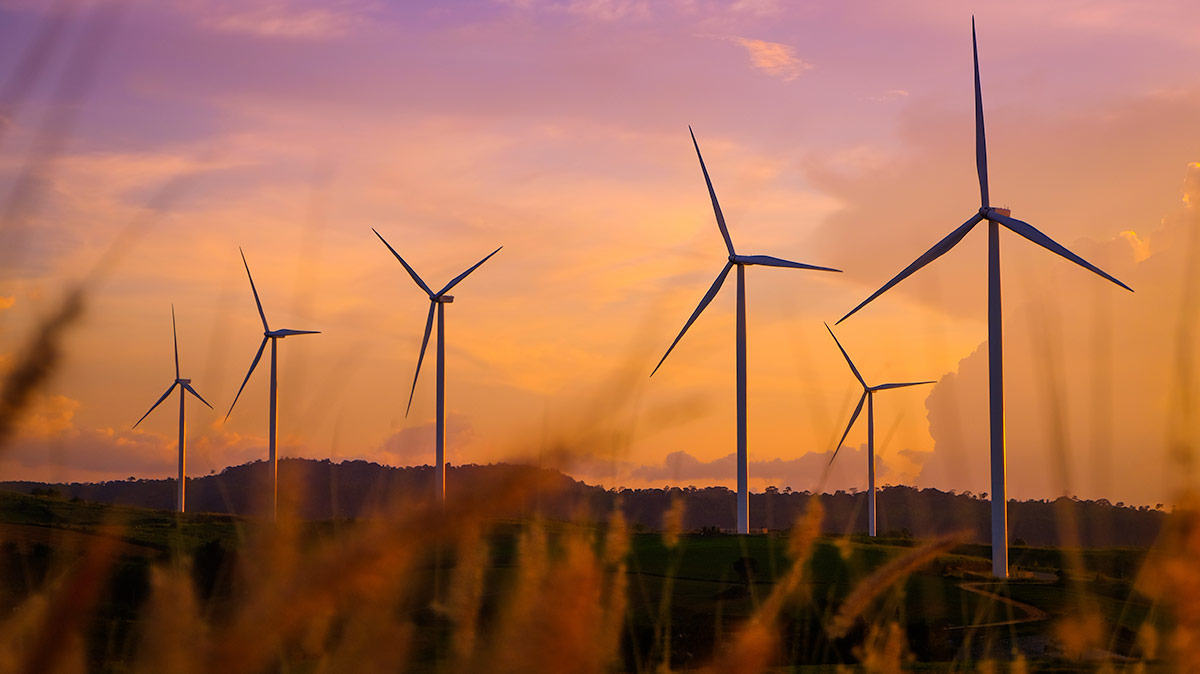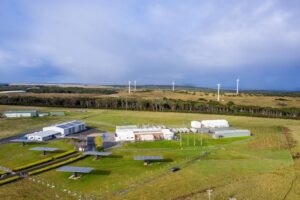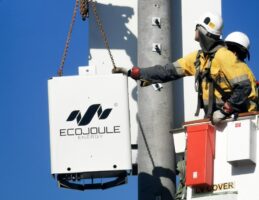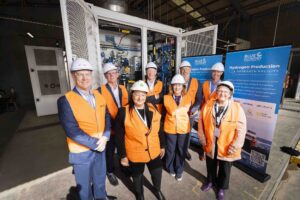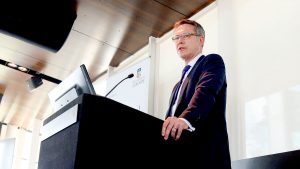Australia’s main electricity grid is predicted to surpass 50 per cent renewables by 2025, and will surge to 69 per cent renewables by 2030, updated projections published by the Morrison government say.
The staggering forecast, produced by the Department of Industry, Science, Energy and Resources, as part of an update to Australia’s emissions projections, show wind and solar emerging as Australia’s dominant sources of electricity within the next few years
On a state by state basis, by 2030, New South Wales is forecast to reach 84 per cent renewables – a dramatic transformation given that it is currently the state most dependent on coal. Victoria is predicted to reach 61 per cent, and Queensland’s to reach 43 per cent, short of the state’s 50 per cent target.
South Australia will source almost all of its electricity – 96 per cent – from renewables, while in 2030 Tasmania will continue to be 100 per cent renewably powered.
Western Australia, which operates on its own grid, is also expected to reach 45 per cent renewables in 2030.
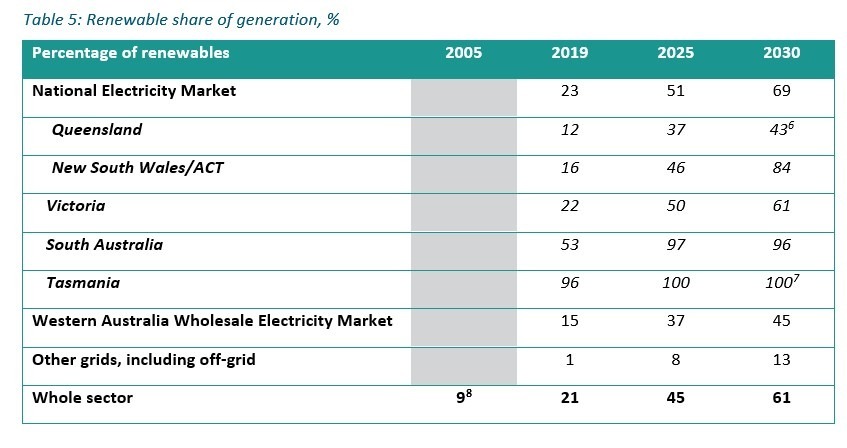
The projections suggest that Australia will fly past the 50 per cent by 2030 renewable energy target that the Labor Party took to the 2019 election, that Angus Taylor said would “drive a wrecking ball through the economy”.
Federal energy minister Angus Taylor also declared, soon after taking the job in 2018 when the renewables share was around 20 per cent, that there was “too much wind and solar” in the grid.
Clearly not, because the forecasts now predict a trebling of wind power of the decade, a five fold increase in large scale solar and a four fold increase in rooftop solar. The government is also relying on “ultra low cost solar” – of around $15/MWh – to drive the switch in green industries such as hydrogen, steel and aluminium.
To support this increased use of wind and solar, an additional 4GW of pumped hydro energy storage capacity is expected to be added to the grid by 2030, along with 8GW of battery storage.
The updated projections clearly spell out a significantly diminished role for coal in Australia’s electricity system, which currently supplies around two-thirds of Australia’s electricity and will see its market share cut by more than half over the course of the next decade.
This is primarily driven by the expected surge in uptake of renewables and virtually no change in overall electricity demand.
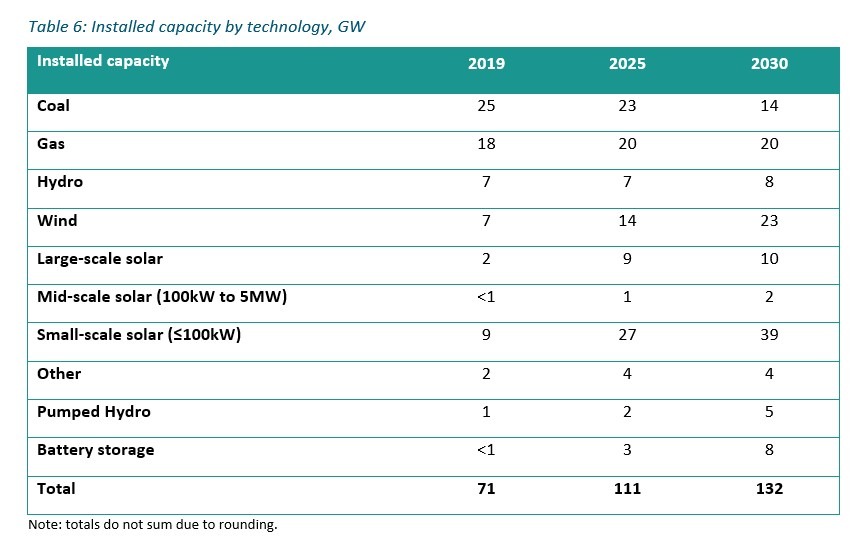
The projections are short of some of the ambitious scenarios modelled by the Australian Energy Market Operator as part of its Integrated System Plan, or even Transgrid’s predictions of reaching 91 per cent renewables by 2030.
But it does highlight the fact, the Morrison government is almost entirely reliant on the projected surge in wind and solar energy to meet its 2030 emissions reduction target, with electricity emissions projected to fall from the 172 million tonnes CO2-e recorded in 2020 to just 88 million tonnes in 2030.
It should be noted the vast majority of the increased uptake of renewable energy and energy storage technologies will be driven by state and territory government policies, including commitments to establish dedicated renewable energy zones.
With the federal Renewable Energy Target being met in 2020 and there being no immediate prospect of an increased target into future years, the federal government will contribute little to incentivising new renewables uptake.
The Morrison government’s main intervention into the electricity market has been the Snowy 2.0 energy storage project, and the $600 million Kurri Kurri gas generator, both being built by Snowy Hydro.
Other sectors of the economy are not predicted to undergo a similar transition to lower emissions over the next decade.
According to the projections, Australia will somehow buck international trends in electric vehicle uptake – with emissions from the transport sector expected to increase from 94 million tonnes in 2020 to 97 million tonnes in 2030.
The government has assumed a rate of electric vehicle update that is modest compared to other forecasts, projecting that just 9 per cent of Australia’s passenger vehicle fleet will be electric, and just 30 per cent of new vehicle sales being electric models by 2030.
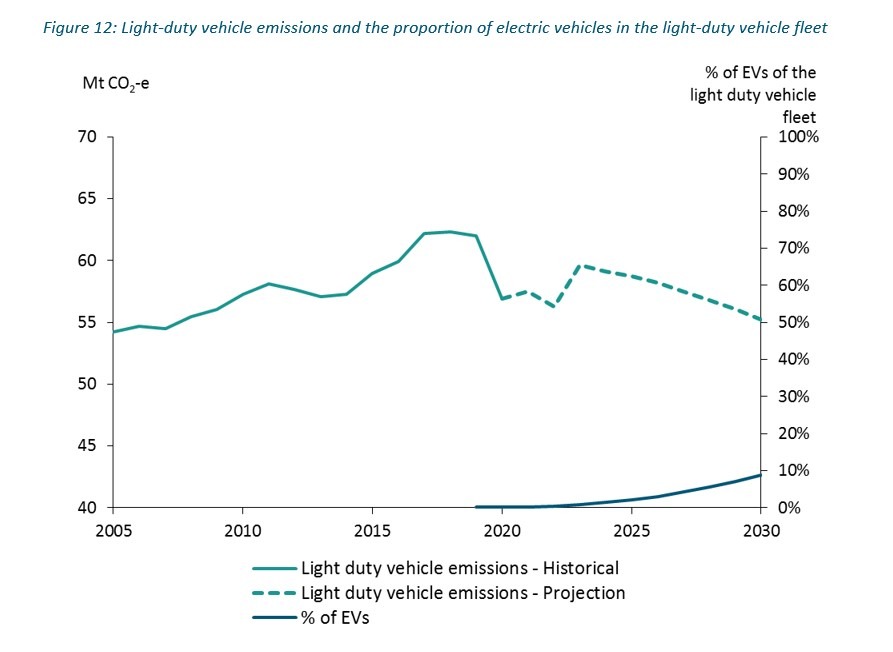
Fugitive emissions – produced during the extraction and processing of coal and gas – are also projected to increase by 12 per cent over the next decade, while emissions from industrial energy use, agriculture and waste would remain largely unchanged.
The 2021 projections are the first to show that Australia is on track to meet its current 2030 emissions target under the Paris Agreement, without a reliance on surplus credits from the Kyoto Protocol.
“Under a baseline scenario, Australia is projected to achieve a 30% reduction on 2005 levels by 2030, in both Paris budget accounting terms and as a point-in-time reduction on 2005 levels,” the projections say.
“Under a Technology Investment Roadmap-aligned scenario, Australia could overachieve on its 2030 target by 7 to 9 percentage points, achieving a 35% reduction on 2005 levels in Paris budget accounting terms or a 38% point-in-time reduction on 2005 levels.”
Despite this expected overachievement, Morrison said on Tuesday that he would not commit Australia to a higher 2030 emissions target – not even one aligned with the level of cuts the government expects to achieve – saying that the 26 to 28 per cent reduction target for 2030 would remain in place.

